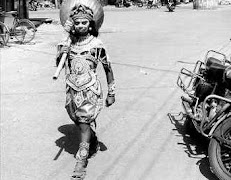A child broke into tears at Rushikulya rookery coast on Sunday morning when a young Olive Ridley hatchling saved by her was savoured by a large red crab before her eyes.
She could not swallow this normal aspect of intricate food chain of Mother Nature. Despite human efforts to save each of the lakhs of hatchlings that are coming out of Olive Ridley nests under the sand at this coast, nature is continuing to take its toll of these hatchlings. For the past three nights mass hatching of Olive Ridley eggs has begun at this famous Rushikulya coast near Berhampur which is a major nesting site of these endangered turtles in the country. On an average around 80 hatchlings are to come out from each of 2,54,000 nests on the 5-km nesting site in almost a week's time.
Local volunteers, forest officials and even tourists are busy making efforts to save each of these hatchlings. Despite all this, fate of these hatchlings seems to be ruled by the Darwinian norm of ‘survival of the fittest'. “We all are compelled to accept that although such a large number of hatchlings enter the sea from this mass nesting site only one out of 1,000 would survive to become a mature Olive Ridley,” said Berhampur Divisional Forest Officer (DFO) A.K.Jena.
 |
Crows feeding on Olive Ridley hatchlings at the Rushikulya rookery |
No one on this beach is able to tolerate tiny beautiful hatchlings die an early death. A tourist Pramod Das said he and his family had saved more than a hundred hatchlings that had strayed away from sea by picking them and leaving them near the sea waves. All measures have been taken to protect the turtle eggs and hatchlings from land predators like foxes, dogs and hyena. But nothing can be done to shoo away the hundreds of crows, which seem to wait for these hatchlings to come out. They instinctively target the weak hatchlings that fall behind during the march towards the sea. Crows seem to have developed the technique to kill and eat weak hatchlings that may be passing from generation to generation among them. They pounce on solitary slow-moving weak hatchlings and overturn them. Before any one could shoo them away, with their sharp beak they tear open its soft abdomen to eat up the insides. They also fly away with the smaller ones in their beaks. At times carcasses of these small hatchlings are seen on trees more than 5 km from the beach.
Crabs that live in burrowed holes on the beach also wait for the weak hatchlings. They overpower the solitary weak slow-moving hatchlings. Crabs throttle neck of the hatchling to kill it. Then they drag it inside their hole to savour its meat. Some hawks also pick up a few of these weak hatchlings. Members of the Rushikulya Sea Turtle Protection Committee (RSTPC), a group of volunteers from villages near rookery who are involved in conservation of Olive Ridley eggs and hatchlings accept this phenomenon.
R.N.Sahu of RSTPC said no one could stop the natural high mortality rate of turtle hatchlings as survival of the fittest is the rule of Mother Nature, “yet we will continue to save as many hatchlings of this endangered species from predators as possible.”
Source: The Hindu


















.jpg)


















































No comments:
Post a Comment